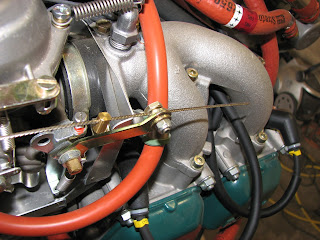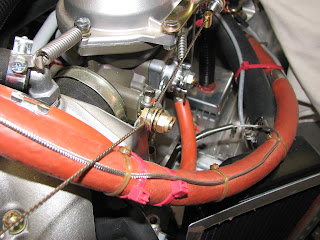MacPara
Well Known Member
When installing the hardware to attach the throttle cable to the throttle arm, the instructions ask for the Rotax locknut (silver in color, blue locking insert) to be re-used. This nut should hold the VA-219 bolt which has a hole for the throttle cable to pass through.

When I was trying to tighten this assembly, I noticed that the nut went on the bolt without hesitation - even when the locking feature was passed. Also, it appeared to be odd that the Rotax lock nut is a metric size while the head of the VA-219 needed an imperial size wrench.
My lock nut tightened a bit until it sheared off some threading and then would not go anywhere except off.
Closer examination showed that the VA-219 threading is indeed imperial size and the lock nut was definitely not.
I decided that an AN365-1032 locknut should be a perfect fit, given the dimensions of the VA-219.

I searched the forum but could not find anybody else having this problem. Am I missing something? My 50-05 is revision 1 from 10/12/09 and has not been revised since.
When I was trying to tighten this assembly, I noticed that the nut went on the bolt without hesitation - even when the locking feature was passed. Also, it appeared to be odd that the Rotax lock nut is a metric size while the head of the VA-219 needed an imperial size wrench.
My lock nut tightened a bit until it sheared off some threading and then would not go anywhere except off.
Closer examination showed that the VA-219 threading is indeed imperial size and the lock nut was definitely not.
I decided that an AN365-1032 locknut should be a perfect fit, given the dimensions of the VA-219.
I searched the forum but could not find anybody else having this problem. Am I missing something? My 50-05 is revision 1 from 10/12/09 and has not been revised since.




